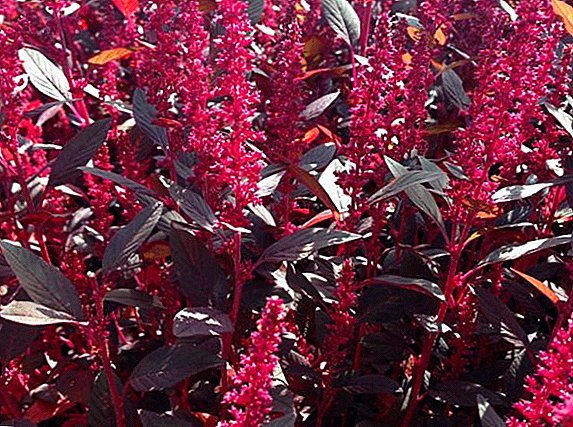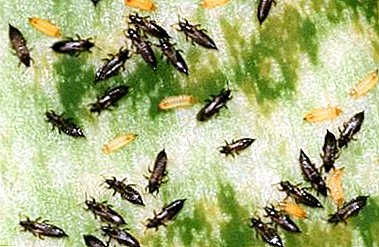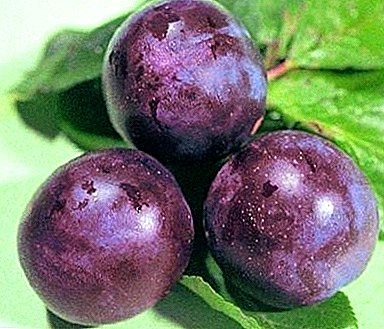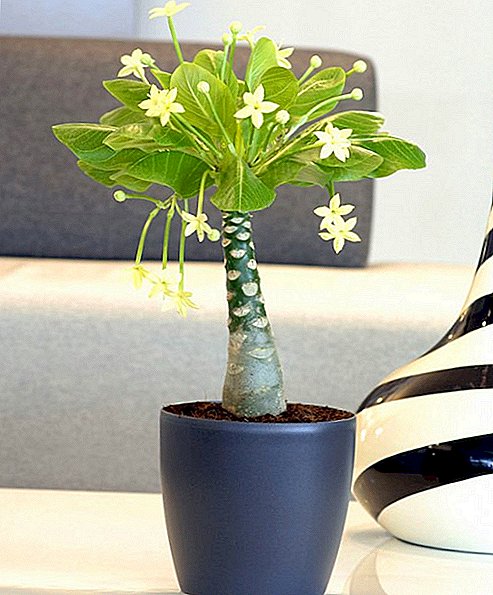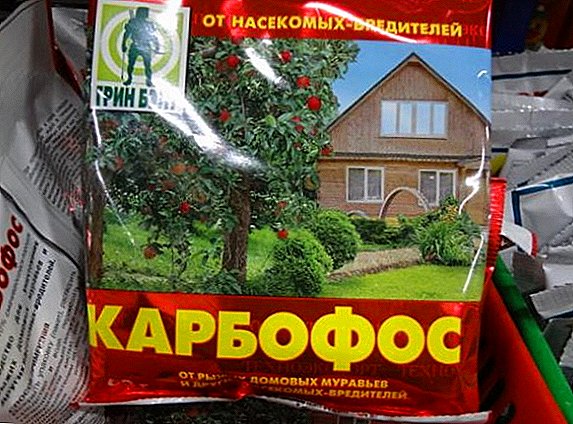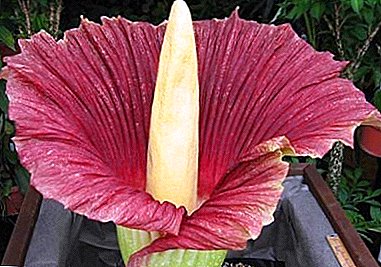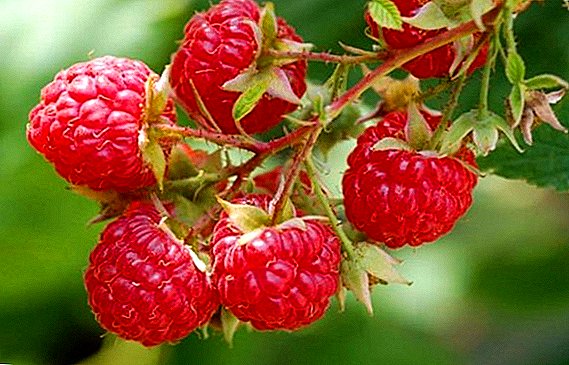 A large variety of raspberry varieties often makes it difficult to choose summer residents before planting this plant.
A large variety of raspberry varieties often makes it difficult to choose summer residents before planting this plant.
Today, rape raspberry "Vera" is quite popular, and we provide a description of this variety in our article.
Breeding history
The grade belongs to high-yieldingwas first registered in 1989. It is the result of the crossing of such varieties: "Kaliningrad", "Novost Kuzmina", "Barnaul". The originator is the Scientific Research Institute named after MA Lisavenko.
Did you know? The largest amount of vitamins and nutrients found in black raspberries, but the yellow is the least useful.Maturation occurs quite early. As a result of the tasting assessment, raspberry gained 3.5 points.

Description and distinctive features of the variety
We offer to get acquainted with the main characteristics of raspberry "Vera".
Bushes
The formation of bushes occurs only in the third season, their height reaches 2 meters. Distinctive features are medium growth and half spacing. Characterized by secondary shoot formation. Possess medium, spiny stems and dense foliage.
Bushes with annual green straight shoots, the tops of which are slightly curved. Thorns have medium length and softness. After one year, the shoots become brown in color, flexibility, but at the same time have high strength. The foliage has medium size, the surface is dull, dark green.
Growing different types of raspberries - black, yellow, white, strawberry, remontantnaya, saplings - will be pleased with a variety of flavors.
Berries
Fruits can have different sizes, both small and medium. The weight of one berry is 1.8-2.7 g. The fruits have a blunt-conical shape, painted in bright red color. Have not too large drupe, uniform mass, but not connected tightly.  It is for this reason that the variety is not recommended to be transported over long distances, since the fruits will quickly lose their shape and crumble. Berries have a pleasant sweet-sour taste.
It is for this reason that the variety is not recommended to be transported over long distances, since the fruits will quickly lose their shape and crumble. Berries have a pleasant sweet-sour taste.
Yield
The first harvest can be collected in July. Ripening occurs at the same time, the berries are not showered. One raspberry bush can yield up to 2 kg, and from 1 hectare up to 13 centners of raspberry is harvested.
How to choose seedlings when buying
To purchase seedlings, it is better to go to a garden nursery or a specialized store. It is not recommended to buy raspberries on the market - the chance that you sell a plant of inadequate quality is quite large. In addition, it is often observed on the market that the root system is placed in polyethylene — this is the cause of the rotting of the roots.
The smaller the seedling has, the greater the likelihood that it will take root. It should be 2-4 escape. Choose saplings with stems of medium length, since large bushes with long shoots, it is difficult to transfer to a new place and can not settle down. 
Did you know? Among all countries on the world market, Russia is the leader in raspberry cultivation. In 2012, 210 thousand tons of berries were produced.
Choosing the right place
Consider the conditions in which raspberries need and how to choose the right place for their landing.
Lighting
For planting raspberries is recommended to choose a plot with good lighting. In the shade the shrub will grow very slowly, so you should not plant it near the trees.
The soil
It is better to plant raspberries on a flat, slightly elevated site without possible flooding. Choose an area where there is fertile, light and breathable soil. You can plant raspberries in a slightly acidic soil. If strong acidification is present, dolomite flour should be added to the soil in advance for the purpose of liming. Also, before planting, it is recommended to fertilize the soil with wood ash. 
Site preparation before planting
It is imperative to dig the ground 30-40 cm deep. The next stage is fertilization. For this compost is perfect, you can also use humus or rotted manure.
If you decide to feed the soil with mineral fertilizers, give preference to potash. On 1 square. meter will need up to 40 g of fertilizer. You can use superphosphate - 50-60 g per 1 square meter.
Important! Raspberries grow very quickly and captures the surrounding areas. To prevent this process, you must plant sorrel around the bushes.After fertilization, start digging a trench. Its depth should be an average of 30 cm and a width of 60-70 cm.
The process of planting seedlings
Particular attention should be paid to planting seedlings. Consider the subtleties of this procedure. 
Timing
It is recommended to plant the seedlings in the fall, in early September, but in some cases this event can be postponed to the spring. If you decide to plant raspberries in the spring, for about a month it is necessary to prepare the soil, fertilize it.
Scheme
In order for plants to grow easily and freely, it is very important to follow the pattern of planting bushes. Between the rows, you should stick to a distance of 1.2-1.5 meters, and between shrubs should be at least 60-70 cm. With this scheme you will be comfortable to take care of plants.
Competent care - the key to a good harvest
After planting the plants need special care. Consider how to implement it.
Watering and mulching
After planting is completed, and the soil is rammed, abundant watering of the plants is carried out. Good results in growing are achieved by using drip irrigation, due to which moisture goes directly to the roots of the plant.
Over time, it will be necessary to pour more land, as the existing one will squeeze a little. It is recommended to sprinkle the roots in such a way that the buds of the root system are at a depth of 2-3 cm. 
Important! The root system of raspberries should not be damp, so it is very important to build high-quality drainage or plant bushes on a small slope.For mulching, you can use straw, humus or other covering materials.
Weeding and loosening
We regularly recommend weeding and clearing the area from weeds. After irrigation works or rains, loosening must be carried out, which will allow to saturate the soil with oxygen.
Preventive spraying
Unfortunately, raspberries do not have good immunity to diseases, therefore it is recommended to carry out preventive spraying before the flowering period begins. Effective is the drug "Inta-Vir", you can also use Bordeaux mixture, karbofos, "Nitrafen" (200 g per 10 liters of water). In the autumn period, the treatment should be carried out necessarily, as it is part of the preparation of plants for winter.
Top dressing
It is recommended to feed three times a season. If you have already used compost during site preparation before planting seedlings, you can limit yourself to organophosphate fertilizers. 
Important! Raspberries should be planted in the autumn at least 40 days before the expected frosts, so that the plants have time to settle down.The content of phosphorus and potassium in the soil should be at least 250 mg / kg. The variety "Vera" loves loamy soils that contain a lot of humus, so a lack of fertilizer can adversely affect the health of the plant and its yield.
Support
To better aired the bushes, it is worth holding a garter shoots. To do this, pull the wire on the supports and tie up bushes to it. It is recommended to hold this event before bud break, otherwise there is a possibility of their damage.
Pruning
It is worth cutting in the fall or spring. This removes weak, damaged and diseased shoots. After the procedure is completed, it is necessary to cover the bushes for the winter. With the arrival of spring, it is time to open the shelter from time to time, to carry out airing so that the plants do not start to scream.
Wintering
Raspberries do not like sudden changes in temperature, so in winter the bushes need to provide shelter. For this plant covered with polyethylene. If you leave the raspberry without shelter, strong cold winds will dry the shoots and lead to their death.
Did you know? Due to the high content of copper in raspberry berries, they act as antidepressants and are able to relieve depression.
Raspberry variety "Vera" attracts attention not only with beautiful and tasty fruits, but also with a rich harvest. With proper care of the plant, you can make a variety of preparations for the winter and feast on fresh berries.


